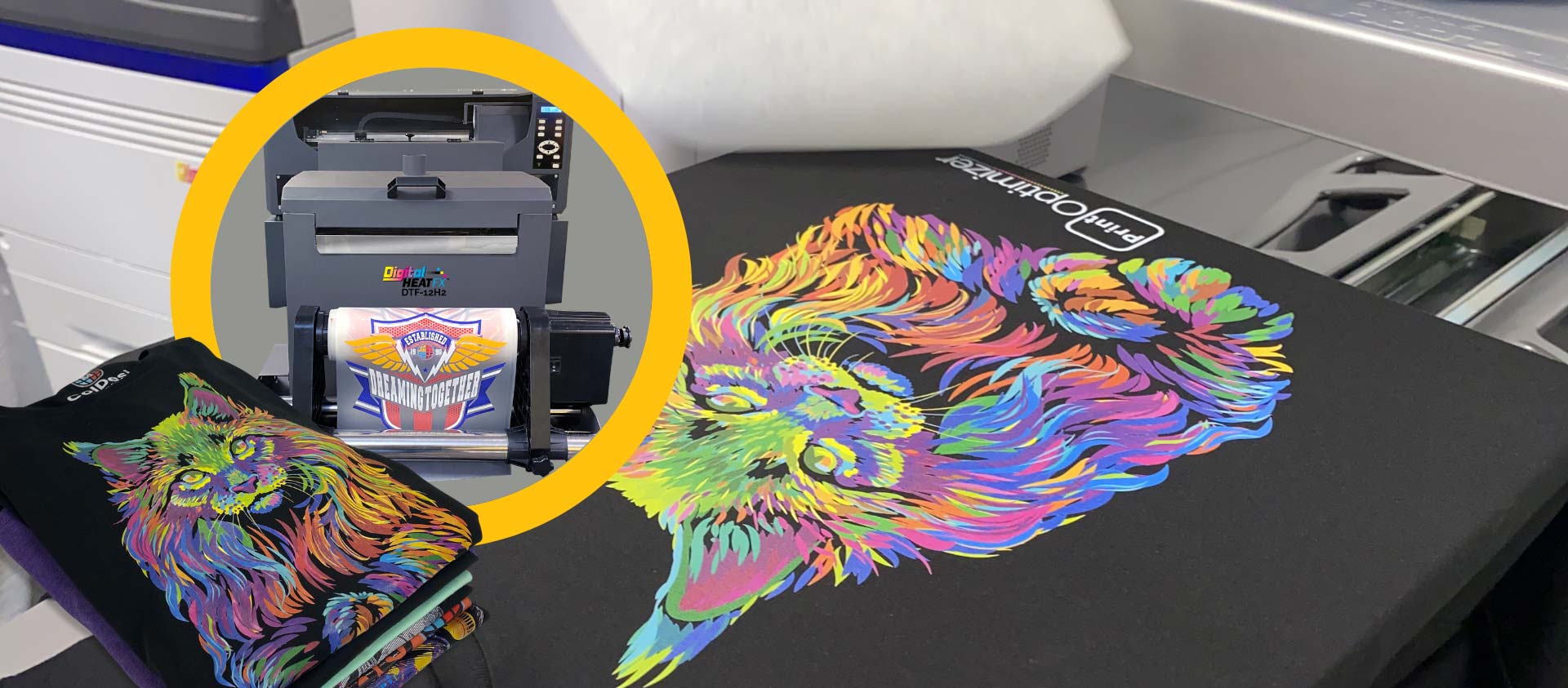Ultimate Overview to DTF Printing Methods for Magnificent Textile Designs
Beginning on the journey of grasping DTF printing techniques can open up a world of opportunities for producing visually exciting textile designs. As the textile sector remains to advance, remaining in advance of the curve with cutting-edge printing approaches is important. In this guide, we will certainly discover the elaborate information of DTF printing, from grasping the fundamental basics to unraveling progressed color strategies that can raise your designs to brand-new elevations. Keep tuned as we explore the nuances of choosing the ideal materials, refining the printing procedure, and getting rid of usual challenges to attain magnificent outcomes.
Comprehending DTF Printing Essentials
DTF printing, a procedure that involves transferring layouts from an unique movie to textiles utilizing warmth and pressure, forms the structure of textile printing strategies. This cutting-edge method allows for top quality, vivid designs to be flawlessly transferred onto various materials with accuracy and detail. The initial step in DTF printing includes developing or picking a layout that will certainly be published onto the fabric. This design is after that printed onto a special movie utilizing a DTF printer, which uses details dyes or pigments to make sure color accuracy and toughness.
When the design is published on the film, it is after that meticulously put onto the textile, guaranteeing correct positioning and positioning. The following critical action includes using warm and stress utilizing a heat press equipment. This process triggers the dyes or pigments on the movie, triggering them to sublimate and bond with the fabric fibers permanently. The result is a stunning, long-lasting textile style that is cleanable, flexible, and resistant to fading. Overall, recognizing the basics of DTF printing is essential for grasping this contemporary textile printing method.
Choosing the Right Fabric Products
Having developed the foundational concepts of DTF printing strategies for fabric layouts, the following essential factor to consider hinges on selecting the suitable fabric materials to enhance this innovative process properly. The success of a DTF print mostly relies on the compatibility between the picked fabric and the printing technique. When choosing fabric products for DTF printing, it is necessary to take into consideration the fabric's structure, weave, and texture. Fabrics that function well with DTF printing consist of polyester blends, spandex, nylon, and other synthetic products. These fabrics commonly have a smooth Related Site surface area that enables for detailed and vivid prints. Furthermore, the stretchability of these materials can suit the warmth transfer process involved in DTF printing without misshaping the design. It is advisable to avoid all-natural fibers such as cotton or silk, as they might not generate the exact same degree of print quality and toughness. By selecting the appropriate textile materials, designers can optimize the potential of DTF printing to develop resilient and spectacular fabric designs.

Mastering the Printing Refine
To excel in DTF printing methods for fabric layouts, understanding the printing process is vital for attaining consistent and top notch outcomes. The temperature, pressure, and duration of warm application need to be meticulously managed to make sure correct adhesion of the layout to the textile. By developing each of these steps in the printing process, designers can consistently produce long lasting and spectacular fabric designs with DTF printing methods.
Enhancing Designs With Shade Strategies

Furthermore, explore shade slopes can bring a sense of movement and fluidness to the design. By blending colors flawlessly, a gradient impact can be attained, including a modern-day and vibrant touch to the fabric layout. important link In addition, utilizing color blocking strategies can produce bold and striking visuals by comparing different strong colors in unique areas of the design.
Furthermore, incorporating metallic or neon shades can supply a captivating and unique element to the textile design, making it attract attention and exude a feeling of vibrancy. When purposefully applied, these shade strategies can elevate the overall visual allure of fabric layouts, making them extra exciting and remarkable.
Troubleshooting Common DTF Printing Issues
After discovering different color methods to enhance fabric layouts, it is essential to attend to typical DTF printing issues that might emerge during the production process. In addition, issues with image clarity and sharpness can occur due to low-resolution pictures or incorrect printing methods. By being conscious of these typical problems and executing the necessary troubleshooting steps, you can boost the total top quality of your DTF printed fabric layouts.
Final Thought
In final thought, mastering DTF printing methods is crucial for producing magnificent textile layouts. With method and interest to detail, one can develop unique and gorgeous textile designs using DTF printing techniques.
Styles))))
DTF printing, a process that entails moving designs from a special movie to textiles making use of warmth and pressure, forms the foundation of textile printing strategies.Having developed the foundational principles of DTF printing strategies for fabric styles, the next vital consideration lies in choosing the suitable fabric materials to complement this ingenious procedure successfully. By choosing the ideal textile products, developers can make the most of the possibility of DTF printing to create spectacular and resilient fabric styles.
To succeed in DTF printing strategies for textile styles, understanding the printing process is necessary for attaining consistent and top quality results. DTF Printing. By refining each of these actions in have a peek at this site the printing process, developers can constantly generate spectacular and long lasting fabric designs with DTF printing methods